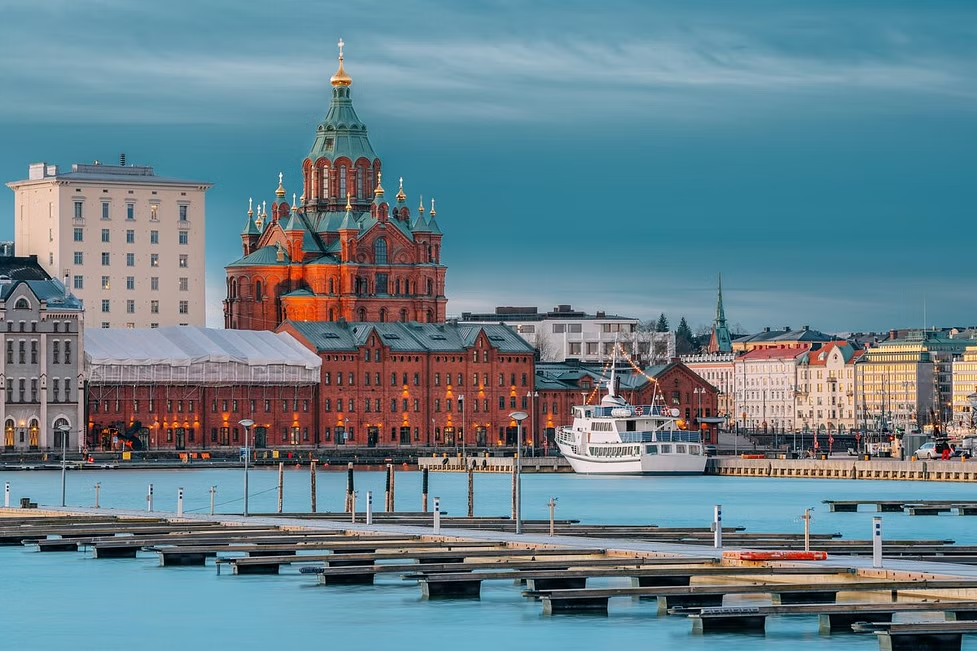When you think of the Nordic countries—Denmark, Finland, Iceland, Norway, and Sweden—what comes to mind? Likely, you imagine sweeping landscapes of snow, magical Northern Lights, pristine lakes, and perhaps a touch of Scandinavian charm. Each of these countries offers a unique experience, from the vibrant cities to the untouched wilderness. But understanding the best time to visit each is crucial to maximizing your experience. In this guide, we’ll dive into the unique seasons of each Nordic destination, highlighting when you should pack your bags and head north for the adventure of a lifetime.
Denmark:
Denmark, known for its rich Viking history, cosmopolitan cities, and stunning coastlines, is a destination for all seasons. However, the best time to visit Denmark hinges on what you seek.
Best Time to Visit: Late Spring to Early Autumn (May to September)
- Weather: During these months, Denmark experiences mild temperatures, making it ideal for exploring cities like Copenhagen, Aarhus, and Odense. Average temperatures range from 15°C to 22°C (59°F to 72°F).
- Why This Time?: This period is perfect for outdoor activities such as biking along Copenhagen’s canals, enjoying the pristine beaches of Skagen, or exploring the world-class museums. Summer festivals, including the Copenhagen Jazz Festival and the Roskilde Festival, add an exciting cultural element to your visit. If you’re looking to explore the iconic Tivoli Gardens, this is when the park is in full bloom.
Winter (December to February), while cold, offers a completely different charm, especially around Christmas, with the streets decorated with twinkling lights and cozy holiday markets. However, temperatures can dip below 0°C (32°F), and daylight hours are limited, so winter tourists need to plan their activities accordingly.
Finland:
Finland is a country of extremes—famous for its Arctic wilderness, thousands of lakes, and the surreal beauty of the Northern Lights. The best time to visit Finland depends on whether you’re chasing the Northern Lights or soaking up the Midnight Sun.
Best Time to Visit: Winter (December to March) and Summer (June to August)
- Winter Wonderland (December to March): The winter months bring a magical atmosphere, perfect for those seeking the Northern Lights, husky safaris, and cross-country skiing in Lapland. The temperatures can plunge as low as -30°C (-22°F), especially in the north, but the snowy landscapes create a winter wonderland like no other. Helsinki, with its Christmas markets, is also stunning at this time.
- Summer (June to August): If you want to experience the infamous Midnight Sun and enjoy the great outdoors, Finland’s summer is incomparable. The days are long, with the sun never fully setting in the north, providing ample time for activities such as hiking, canoeing, and visits to Finland’s serene lakes. Helsinki is vibrant during this time, with festivals and open-air events populating the calendar. Temperatures hover around 15°C to 22°C (59°F to 72°F) in the south, offering a pleasant escape from summer heat elsewhere in Europe.
Autumn (September to November) is also a good time to witness the vibrant colors of Finland’s forests. The weather can be cool and rainy, but the fall foliage creates picturesque landscapes, especially in national parks like Nuuksio and Oulanka.
Iceland:
Iceland, where glaciers meet volcanoes, offers a truly unique experience. Known for its otherworldly landscapes, hot springs, and fascinating history, Iceland can be explored year-round, but timing your visit right can enhance the experience.
Best Time to Visit: Summer (June to August) and Winter (November to February)
- Summer Magic (June to August): The summer months in Iceland provide long days, particularly around the summer solstice, when daylight can last up to 24 hours in the far north. This is ideal for road trips along the Golden Circle or a hike to Landmannalaugar. The temperature hovers around 10°C to 15°C (50°F to 59°F), perfect for exploring glaciers, waterfalls, and hot springs. The vibrant greenery and accessible hiking trails make summer the peak time for outdoor enthusiasts.
- Winter Wonderland (November to February): If you dream of seeing the Northern Lights in all their glory, winter is the best time to visit Iceland. With fewer tourists, you can have the Icelandic wilderness all to yourself, experiencing the raw beauty of snowy landscapes, the Blue Lagoon, and perhaps even a glimpse of Ice Caves. Temperatures range from -3°C to 3°C (27°F to 37°F), but the chilly air makes the cozy hot springs even more inviting.
Norway:
Norway, with its dramatic fjords, towering mountains, and rich Viking heritage, offers an abundance of natural wonders. Whether you are chasing the Northern Lights or the Midnight Sun, Norway has something to offer year-round.
Best Time to Visit: Summer (June to August) and Winter (November to March)
- Summer (June to August): The summer months are ideal for exploring Norway’s stunning fjords, hiking the iconic Preikestolen (Pulpit Rock), or cruising along the Geirangerfjord. Average temperatures range from 10°C to 20°C (50°F to 68°F), allowing for comfortable sightseeing and outdoor adventures. The Midnight Sun in the far north (above the Arctic Circle) offers an unforgettable experience, as the sun never sets for weeks.
- Winter (November to March): Winter is the best time for those wanting to experience Norway’s winter sports scene—whether it’s skiing in Lofoten Islands or snowshoeing in Tromsø. For travelers seeking the Northern Lights, Tromsø is one of the best places on Earth to catch a glimpse of this celestial phenomenon. Temperatures can drop to -15°C (5°F) in the north, so prepare for cold weather, but the frozen landscapes are worth it.
Autumn (September to November) is also a great time to visit, with fewer crowds, autumn foliage, and lower accommodation prices. This is also the shoulder season, so it’s perfect for those looking for a quieter experience.
Sweden:
Sweden is a land of contrasts, offering cosmopolitan cities like Stockholm and Gothenburg alongside vast forests, lakes, and charming villages. The best time to visit Sweden is highly influenced by what you wish to do, whether it’s city tours, hiking, or winter sports.
Best Time to Visit: Summer (June to August) and Winter (December to February)
- Summer (June to August): Sweden’s summer months are the prime time for experiencing the great outdoors. You can hike in Abisko National Park, explore the archipelagos of Stockholm, or visit the medieval town of Visby on Gotland. The temperatures range from 16°C to 22°C (61°F to 72°F), perfect for enjoying outdoor activities such as fishing, hiking, and biking. This is also the time to experience Swedish festivals like Midsummer.
- Winter (December to February): For winter enthusiasts, Sweden offers excellent skiing and winter sports, particularly in regions like Åre and Sälensfjällen. If you’re seeking a winter wonderland experience, head to Swedish Lapland, where you can experience the Northern Lights, snowmobile safaris, and visits to Santa Claus Village. Temperatures can drop below -20°C (-4°F), but the cozy Swedish atmosphere makes it all worth it.
Spring (March to May) and Autumn (September to November) are also charming times to visit. Spring brings the arrival of longer days, while autumn’s foliage is breathtaking in Sweden’s national parks.
Each of the Nordic countries has a distinct character shaped by its seasons. Whether you want to experience the magic of the Northern Lights in winter, the endless daylight of summer, or the quiet beauty of autumn, there’s a perfect time for every kind of traveler. The Nordic countries offer a blend of natural beauty, rich history, and modern culture, making them some of the most desirable travel destinations on the planet.






